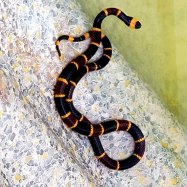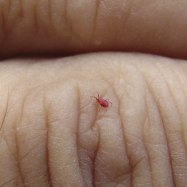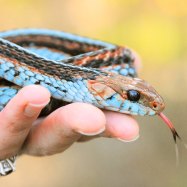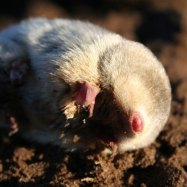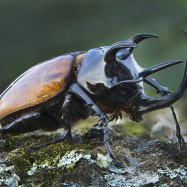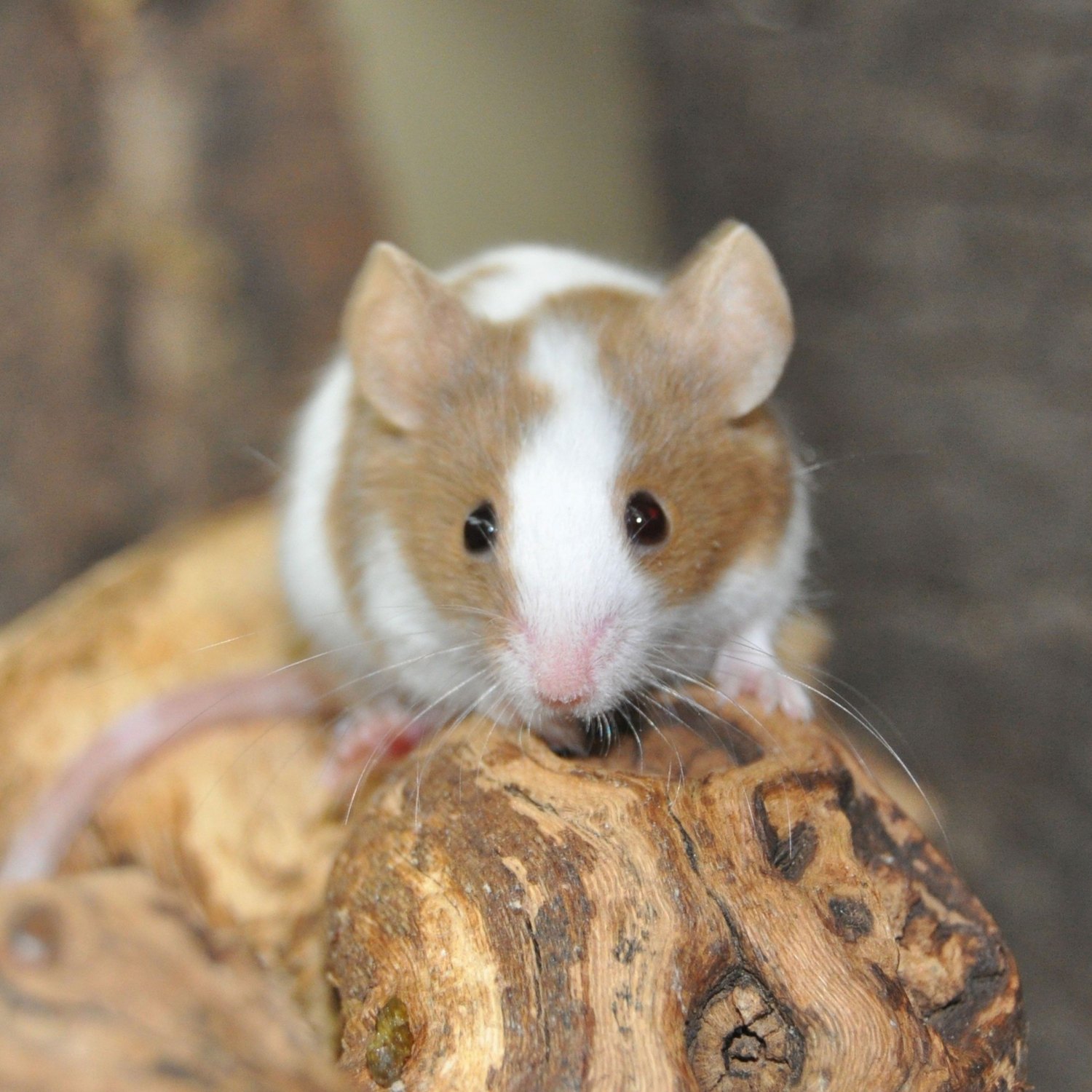
Fancy Mouse
Approximately 2.5 to 4 inches (6 to 10 cm)
The Fancy Mouse is a popular choice for pet owners due to its small size and unique appearance. Coming in at just 2.5 to 4 inches, these cute critters can be found in pet stores and homes all over the world. With a small and slender body, pointed snout, and large ears, these charming rodents belong to the Muridae family. Consider adding one of these fascinating friends to your home!
Animal Details Summary:
Common Name: Fancy Mouse
Kingdom: Animalia
Habitat: Various habitats, including grasslands, forests, and urban areas
The Fascinating World of the Fancy Mouse
Furry, cute, and full of personality – these are just some words used to describe the Fancy Mouse. This tiny creature may seem unremarkable at first glance, but behind its unassuming appearance lies a fascinating world. With its scientific name being Mus musculus and its common name being the Fancy Mouse, this small rodent has captured the hearts of many around the world. From its diverse habitat to its playful and curious nature, the Fancy Mouse is a true marvel of the animal kingdom Fancy Mouse.An Animal of Many Names
The Fancy Mouse may be known by many names – Fancy Mouse, domestic mouse, or pet mouse – but they all refer to the same species, Mus musculus. This species is a member of the Animalia kingdom, the Chordata phylum, and the Mammalia class. It belongs to the order Rodentia, which includes other small mammals such as rats, hamsters, and gerbils. Within the Muridae family, the Fancy Mouse resides alongside other rodents like the house mouse and the brown rat.A Versatile Habitat
One of the most notable things about the Fancy Mouse is its incredible adaptability. These tiny creatures can be found in various habitats, including grasslands, forests, and urban areas. They have a remarkable ability to thrive in both natural environments and human-made structures, making them a common sight in many parts of the world. It is believed that the Fancy Mouse originated in Asia, but it has since spread worldwide, thanks to human intervention.An Omnivorous Diet
The Fancy Mouse's versatile nature extends to its feeding method as well Frengle. As omnivores, they have a varied diet that includes both plants and animals. In the wild, they will feed on seeds, grains, insects, and small invertebrates. In captivity, they can be fed a diet of commercial mouse food, supplemented with fresh fruits, vegetables, and protein sources such as boiled eggs or mealworms. The ability to adapt to different food sources is one of the reasons why the Fancy Mouse has been so successful in different habitats.Global Distribution
The Fancy Mouse's adaptability has made it a common resident in many countries worldwide. They can be found in pet stores and homes all over the globe, thanks to their popularity as pets. People of all ages, from children to seniors, are drawn to these friendly and curious creatures. Their small size and low maintenance make them an ideal choice for those looking to add a furry companion to their lives.Pet or Pest?
Despite their cute and friendly nature, the Fancy Mouse has often been viewed negatively as a pest in some parts of the world. In areas where they are not native, they can cause damage to agricultural crops and spread diseases. However, when kept as pets, these tiny rodents can make excellent companions. They are social animals and should always be kept in same-sex pairs to prevent loneliness and aggression. With proper care and attention, they can live up to three years in captivity.The Many Colors of the Fancy Mouse
One of the most fascinating aspects of the Fancy Mouse is its wide range of colors and patterns. As mentioned earlier, their coat color can vary from white, black, gray to various shades of brown. They can also have patterns such as spots or stripes, making each mouse unique. This variation is a result of selective breeding for specific traits, as the Fancy Mouse has been domesticated for over a century.A Comparative Size
The Fancy Mouse is a small and slender rodent, with a pointed snout and large ears. They measure approximately 2.5 to 4 inches (6 to 10 cm) in length and weigh between 0.7 to 1.6 ounces (20 to 45 g). To put this into perspective, they are significantly smaller than their wild counterparts, the house mouse, which can grow up to 9 inches (22 cm) in length. Their diminutive stature makes them even more endearing and popular among pet owners.The Fancy Mouse's Place in Science
Apart from being beloved pets, the Fancy Mouse has also played a significant role in scientific research. Due to their close genetic relationship to humans, these small rodents have been used in many studies to better understand the human body and its processes. Their use as research animals dates back to the 18th century when they were first used in experiments studying genetics. Since then, their contribution to scientific discoveries has been invaluable.A Model Organism for Genetics Research
The Fancy Mouse has become a popular model organism for genetic studies due to its relatively short lifespan and ability to reproduce quickly. In addition, their genetic makeup is similar to humans, making them ideal candidates for studying genetic diseases and finding potential treatments. Through gene editing techniques, scientists have been able to create genetically modified mice with specific mutations, allowing researchers to study the effects of these mutations on various diseases.Contributions to Medical Research
Apart from genetics, the Fancy Mouse has also made significant contributions to medical research. They have been used in studies investigating human diseases such as cancer, diabetes, and neurological disorders. Their small size and ease of handling make them ideal for experiments and drug testing. As research advances, these small rodents continue to play a critical role in unlocking the mysteries of the human body.A Furry Companion with Personality
While the Fancy Mouse may have a reputation as a research animal, it is essential to remember that they are also beloved pets. As pets, they bring joy, companionship, and a unique personality to their owners' lives. Despite their small size, they have a big character and can be quite curious and playful. They are also intelligent animals and can be trained to do various tricks, such as running through mazes or responding to their names.Caring for a Fancy Mouse
Keeping a Fancy Mouse as a pet does not require a lot of effort, but it does come with some responsibilities. Firstly, it is crucial to provide them with a safe and comfortable habitat that includes bedding, hiding places, and toys to keep them entertained. They should be fed a diet that includes a balance of commercial mouse food, fresh fruits, and vegetables. Additionally, their water should be changed regularly to ensure freshness.Adopt, Don't Shop
While Fancy Mice can be found in pet stores worldwide, it is essential to consider adopting from a shelter or rescue organization instead. Many of these small rodents end up in shelters due to irresponsible breeding or improper care from their previous owners. By adopting, you are giving a loving home to an animal in need and reducing the demand for breeding and pet stores.Conclusion
In conclusion, the Fancy Mouse may be a small and unassuming creature, but it has captured the hearts of many for centuries. From its adaptability and diverse habitat to its role in scientific research and its lovable personality, the Fancy Mouse is a true marvel of the animal kingdom. Whether as a pet or as a research animal, they have made a significant impact on the world, and their presence will continue to be felt for many years to come. So, the next time you come across a Fancy Mouse, take a closer look, and you might just uncover a whole new world hiding behind its tiny stature.

Fancy Mouse
Animal Details Fancy Mouse - Scientific Name: Mus musculus
- Category: Animals F
- Scientific Name: Mus musculus
- Common Name: Fancy Mouse
- Kingdom: Animalia
- Phylum: Chordata
- Class: Mammalia
- Order: Rodentia
- Family: Muridae
- Habitat: Various habitats, including grasslands, forests, and urban areas
- Feeding Method: Omnivorous
- Geographical Distribution: Worldwide
- Country of Origin: Unknown, but believed to have originated in Asia
- Location: Found in pet stores and homes worldwide
- Animal Coloration: Varies; can be white, black, gray, or various colors and patterns
- Body Shape: Small and slender with a pointed snout and large ears
- Length: Approximately 2.5 to 4 inches (6 to 10 cm)
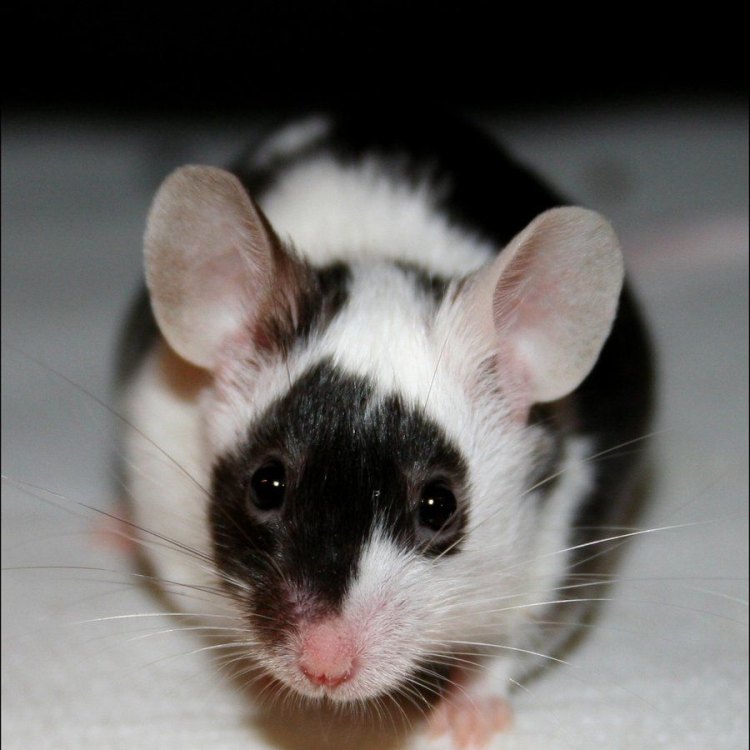
Fancy Mouse
- Adult Size: 4 to 5 inches (10 to 13 cm) in length, including the tail
- Average Lifespan: 1.5 to 3 years
- Reproduction: Sexual reproduction
- Reproductive Behavior: Promiscuous mating
- Sound or Call: Can produce ultrasonic vocalizations
- Migration Pattern: Non-migratory
- Social Groups: Social animals that live in groups
- Behavior: Nocturnal and highly active
- Threats: Predation, diseases, and environmental changes
- Conservation Status: Not evaluated by the IUCN
- Impact on Ecosystem: Can have negative impacts as an invasive species
- Human Use: Kept as pets and used in scientific research
- Distinctive Features: Large ears, long tail, and small size
- Interesting Facts: Fancy mice have been selectively bred for different coat colors, patterns, and other traits
- Predator: Various predators, including birds of prey and carnivorous mammals
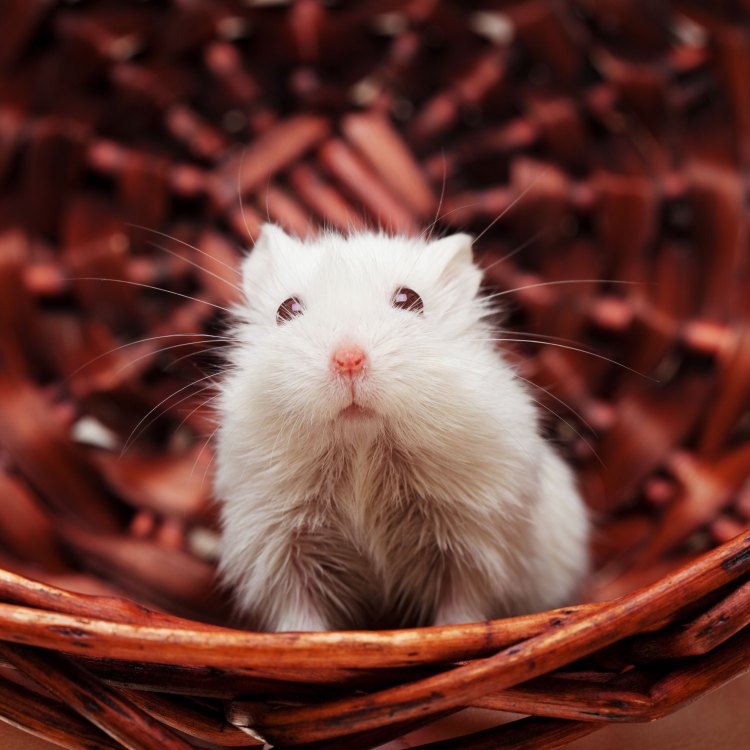
Mus musculus
The Fascinating World of Fancy Mice: Unique Features and Role in Ecosystem
Hidden away in cages in laboratories and homes all around the world, fancy mice may seem like an ordinary rodent. But take a closer look, and you'll discover just how unique and intriguing these small creatures truly are. From their distinctive physical features to their reproductive behavior and impact on the ecosystem, there's more to fancy mice than meets the eye.First introduced to the western world in the 16th century, fancy mice (also known as domestic mice) were originally bred in Japan for their unique coat colors and patterns PeaceOfAnimals.Com. Today, they are one of the most popular pets in the world, with their playful and curious nature winning the hearts of many. But beyond being a beloved companion, fancy mice also play a significant role in scientific research and hold important positions in the ecosystem.
Let's explore the remarkable features and behaviors of fancy mice that make them such fascinating creatures.
Distinctive Physical Features
One of the first things you'll notice about fancy mice is their small size. Adults typically grow to be 4 to 5 inches (10 to 13 cm) in length, including their long tail. But what sets them apart from other species of mice are their distinctive physical features.Fancy mice are known for their large ears and long tails, both of which play an important role in their survival. Their ears help them to hear predators and other mice, while their long tails aid in balance and mobility. These features also make them excellent climbers, allowing them to scurry and jump through their habitat with ease False Water Cobra.
One of the most fascinating aspects of fancy mice is their wide range of coat colors and patterns. These tiny creatures have been selectively bred for centuries, resulting in a variety of coats, from solid colors like black and white to multi-colored patterns like piebald and calico. Some even have unique genetic traits, such as curly or hairless coats.
Reproductive Behavior: Promiscuity and Ultrasonic Vocalizations
Fancy mice are social animals that live in groups, with a dominant male and several females. This social structure also extends to their reproductive behavior, as fancy mice practice promiscuous mating. This means that males mate with multiple females, leading to diverse genetic offspring.During mating, fancy mice can produce ultrasonic vocalizations, which are too high-pitched for humans to hear. These vocalizations serve as a form of communication between males and females and can be used to attract a mate or defend their territory.
Nocturnal and Highly Active
Another interesting behavior of fancy mice is their nocturnal nature. These small rodents are most active at night and spend most of their day sleeping and hiding. Being nocturnal not only helps them avoid predators, but it also allows them to utilize their keen sense of smell and hearing to navigate their surroundings and find food.As highly active animals, fancy mice require plenty of exercise and mental stimulation to stay healthy and happy. This is why it's essential for pet owners to provide them with enough room to run and play, as well as toys and tunnels for enrichment.
Threats and Conservation Status
Like most animals, fancy mice face various threats in their natural habitat. Predation, diseases, and changes in their environment can all impact their population numbers. However, due to their widespread distribution and ability to adapt to different environments, fancy mice are not currently considered at risk.Nevertheless, according to the International Union for Conservation of Nature (IUCN), fancy mice have not been evaluated for their conservation status. This could be because they are often bred in captivity and considered a domesticated species.
Impact on Ecosystem
While fancy mice may not be a concern for their conservation status, they can have negative impacts on the environment as an invasive species. Because they are widely used as pets and in scientific research, they can escape or be released into the wild, where they can compete with native species for resources and spread diseases.In some cases, fancy mice have been found to carry viruses that can be transmitted to wild mice and other small animals, causing population declines. This highlights the importance of responsible pet ownership and proper disposal of laboratory animals to prevent invasive species from disrupting the delicate balance of ecosystems.
Human Use and Role in Research
Aside from being kept as pets, fancy mice also play a vital role in scientific research. Their small size, short lifespan, and ability to reproduce quickly make them ideal for studying genetics, behavior, and diseases. They have been used in a wide range of research, including cancer studies, drug development, and behavioral studies.While some may argue that using animals in research is unethical, fancy mice are carefully bred and cared for by expert scientists who follow strict regulations and guidelines. Furthermore, their use in research has led to significant medical breakthroughs that have benefited both humans and animals.
Interesting Facts
Here are a few more intriguing facts about fancy mice that you may not know:- Fancy mice have a lifespan of 1.5 to 3 years in captivity, but some have been known to live up to 6 years.
- Despite their small size, fancy mice can jump up to 6 inches (15 cm) high.
- In the wild, fancy mice are non-migratory animals, meaning they do not travel long distances like other species of mice.
- Fancy mice are preyed upon by various predators, including birds of prey and carnivorous mammals.
In Conclusion
Fancy mice may seem like just another domesticated animal, but their distinctive features, behaviors, and role in the ecosystem make them truly remarkable creatures. From their promiscuous mating and ultrasonic vocalizations to their impact as an invasive species and significance in scientific research, these small rodents have captured the fascination of humans for centuries. So, the next time you encounter a fancy mouse, take a moment to appreciate just how unique and vital they are in the natural world.
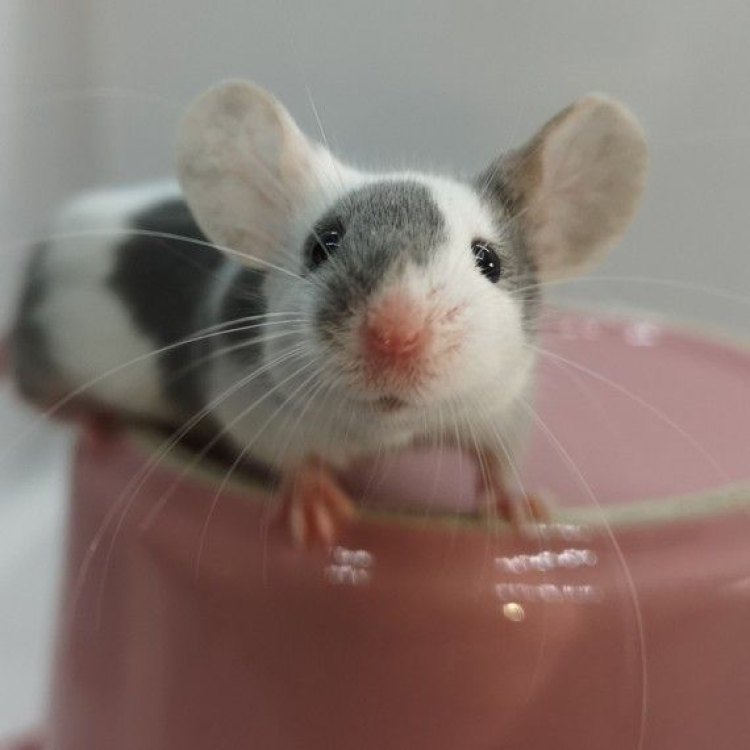
The Fascinating World of the Fancy Mouse
Disclaimer: The content provided is for informational purposes only. We cannot guarantee the accuracy of the information on this page 100%. All information provided here may change without prior notice.


